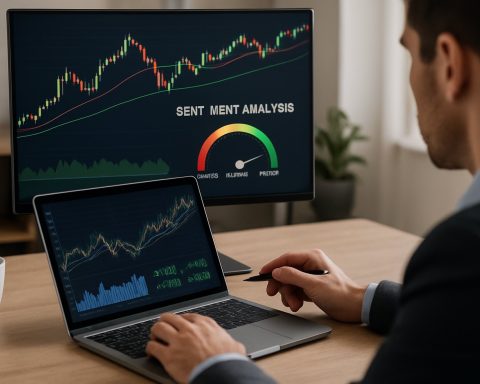- The Federal Tax Service (FNS) in Russia launches a webpage to aid cryptocurrency miners in tax reporting with exchange rates and trading volumes from major crypto exchanges.
- This tool helps miners determine the market worth of digital currencies at receipt, enhancing transparency in crypto taxation.
- Major exchanges like Binance, Bybit, OKX, and KuCoin are featured, each with trading volumes exceeding 100 billion rubles.
- The service is meant as a “reference only” tool to assist miners in calculating taxable income.
- Concerns persist about accurately determining market rates, especially without explicit ruble pairs in major exchanges.
- Suggestions include using ruble market data from licensed Belarusian brokers for more precise valuation.
- FNS converts crypto prices into rubles via Central Bank rates, indicating Russia’s gradual regulatory integration of cryptocurrencies.
- This initiative represents progress in digital regulation, amid ongoing methodological challenges.
Amidst Russia’s vast digital landscape, a new flicker of regulatory advancement has emerged. The Federal Tax Service (FNS) has embarked on a journey to reshape the way cryptocurrency miners navigate the taxing labyrinth of their digital earnings. By introducing a dedicated webpage featuring cryptocurrency exchange rates and trading volumes from major international exchanges, the FNS takes a decisive step towards clarifying the often opaque world of crypto taxation.
Envision a miner, tools in hand, not of pickaxes and dynamite, but of complex algorithms and digital wallets. For these modern day miners, the FNS’s new service is a compass, claiming to point them true north. It offers a snapshot of trading volumes from crypto leviathans like Binance, Bybit, OKX, and KuCoin, each with transactions surpassing a staggering 100 billion rubles. Presented as a “reference only” tool, it promises a potential lifeline in calculating taxable income from cryptocurrency mining. The essence is simple: as digital currencies flow into miners’ wallets, they can now measure their worth based on the prevailing market quote at the time of receipt.
The introduction of this tool paints a picture of progress, a nod to transparency and open dialogue. The FNS invites users to explore this digital aid, equipped to furnish the data necessary for diligent tax reporting. Miners, no longer left adrift in a sea of legal ambiguity, find a guide to steer them toward fulfilling their fiscal duties.
Yet, as with every innovation, questions loom in the shadows. Doubts about the accuracy of determining a reliable “market rate” arise, particularly in an environment where explicit ruble pairs are as rare as a mine yielding fool’s gold. The absence of ruble-specific trading pairs on major exchanges casts a cloud over this otherwise promising tool. Suggestions float through the air, like leaves on the wind, to consider the ruble market data from licensed Belarusian brokers for a more precise calibration for Russian entities.
Despite these murmurs of skepticism, the FNS persists in its endeavor—recalibrating the narrative around cryptocurrency within Russia. It converts crypto prices in foreign currencies or stablecoins into rubles at the Central Bank’s official rates. Such a move signals Russia’s gradual integration of digital currencies into its legal and regulatory tapestry, a fabric woven with the threads of innovation and caution.
In the grander scheme, the FNS’s pioneering resource reflects a burgeoning commitment to digital evolution and regulation. Though the path may be strewn with methodological queries, it marks a significant step in recognizing and shaping the rules for the burgeoning frontier of digital assets.
Revolutionizing Crypto Taxation: The Rise of Cryptocurrency Regulation in Russia
Understanding Russia’s New Crypto Tax Tool
The Federal Tax Service (FNS) in Russia has unveiled a resource aimed to aid cryptocurrency miners in tackling the complexities of crypto taxation. By providing up-to-date exchange rates and trading volumes from major global platforms like Binance, Bybit, OKX, and KuCoin, the FNS is taking a significant step toward demystifying the taxable valuation of digital currencies for miners operating within its jurisdiction.
Key Features and Specs of the New Tool
– Real-Time Data Access: Offers access to the most current exchange rates and trading volumes from major exchanges.
– Reference-Only Scope: Designed as a guiding tool, not a definitive source, emphasizing the need for independent verification.
– Integration with Central Bank Rates: Conversion of crypto prices into rubles using official Central Bank exchange rates, facilitating tax calculations for crypto earnings.
Pressing Questions and Concerns
1. How Accurate Is the Market Rate?
– While this tool provides a snapshot of trading volumes and rates, its accuracy is a concern due to the lack of ruble-specific trading pairs on major exchanges. The reliance on Central Bank rates for conversion could lead to discrepancies in real-time market conditions.
2. What Are the Potential Limitations?
– The service might not fully address the volatile nature of crypto prices, which can fluctuate significantly over short periods.
– Miners may need to supplement this data with other sources to ensure comprehensive tax reporting.
How-to Steps: Using the FNS Crypto Tool
1. Access the FNS Website: Ensure you are on the official FNS platform to avoid scams or misinformation.
2. Navigate to the Cryptocurrency Section: Locate the section dedicated to exchange rates and trading volumes.
3. Review Data from Exchanges: Check the latest rates and volumes from supported exchanges like Binance and OKX.
4. Convert Using Central Bank Rates: Use the listed Central Bank conversion rates to translate crypto values into rubles.
5. Maintain Records: Keep comprehensive records of your transactions and the conversion rates used for future audits or reporting requirements.
Real-World Impact and Industry Trends
– Increased Regulatory Clarity: This step by Russia aligns with global trends of enhancing crypto regulation, offering clearer guidelines for tax obligations.
– Potential for Broader Adoption: As Russia refines its approach, other countries might adopt similar systems, fostering global cooperation in crypto regulation.
– Growing Scrutiny: Increased regulation could lead to heightened scrutiny over crypto transactions, intensifying the need for compliance.
Controversies and Limitations
– Absence of Ruble-Paired Data: This remains a sticking point; without direct ruble pairs, accuracy might be compromised.
– Skepticism Towards Centralized Oversight: Some stakeholders express wariness about government intervention in what is perceived as a decentralized domain.
Recommendations and Tips for Miners
– Regularly Update and Verify Information: Stay informed about regulatory changes and ensure your data is up-to-date.
– Seek Professional Advice: Consult with tax professionals specializing in cryptocurrency to navigate complex requirements effectively.
– Diversify Resources: Employ multiple tools and data sources to corroborate the FNS’s insights for a comprehensive tax strategy.
Conclusion
Russia’s initiative marks a pivotal progression in crypto regulation, aiming to bring clarity and compliance to an often murky landscape. While challenges remain, particularly regarding exchange data accuracy, this tool represents an essential stride toward integrating cryptocurrency into the nation’s fiscal framework.
For more information on cryptocurrency regulation and resources, visit the Federal Tax Service of Russia.










